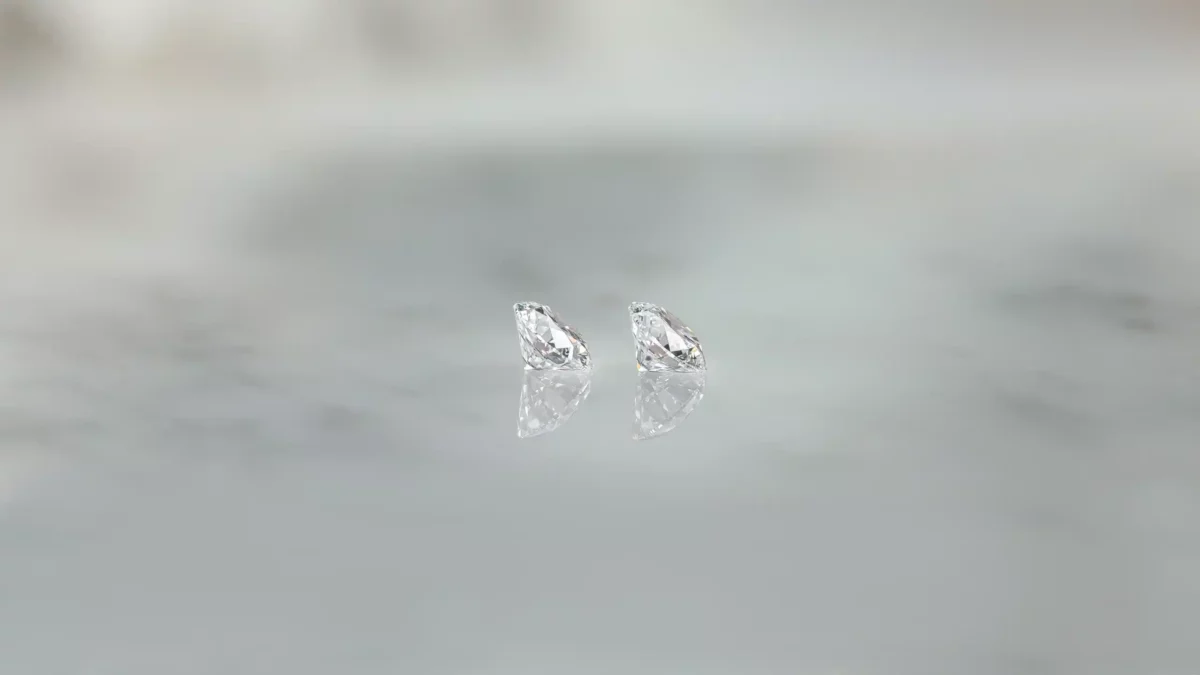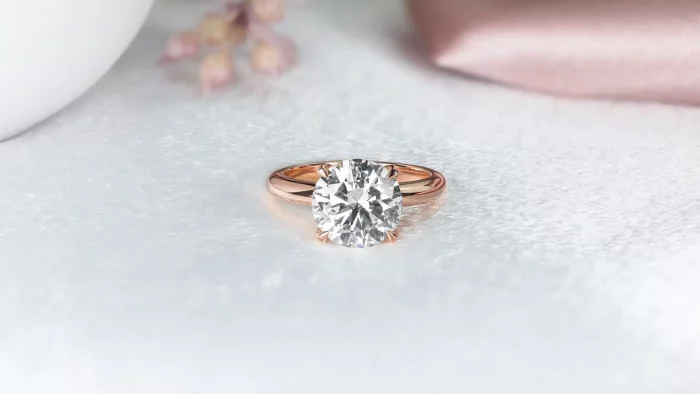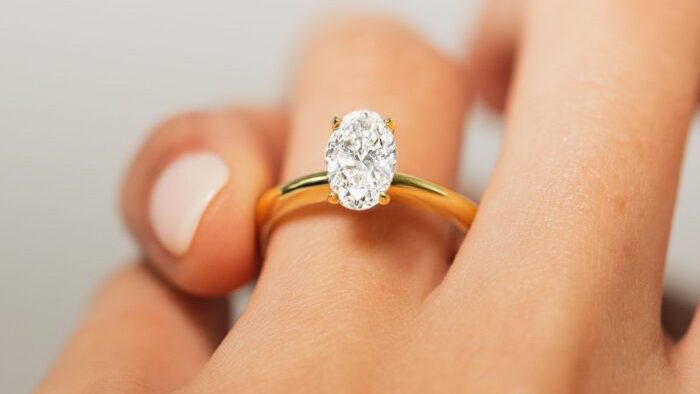

Choosing a diamond for an engagement ring or special occasion jewellery is both an emotional and significant investment. With the growing popularity of lab-grown diamonds, many couples find themselves weighing the merits of lab-grown vs natural diamonds. While both possess the exact same chemical makeup and physical properties, understanding their differences will help you select a diamond that aligns with your values, budget, and style preferences.
In this guide, we’ll explore how these diamonds are formed, their pricing structures, environmental impact, and more. You’ll learn about lab-created diamonds test procedures, how to read diamond certificates, and why some buyers prefer earth-mined diamonds while others embrace the innovative technology behind lab diamonds.
Yes, unequivocally. Lab-grown diamonds are visually, chemically, and physically identical to natural diamonds. The differences between these two types of diamonds are so subtle that they can only be detected by trained gemmologists using specialised equipment.
Diamonds form when carbon is compressed under extreme pressure and intense heat. This process occurs either beneath the Earth’s crust over billions of years or within a laboratory setting over a matter of weeks.
At the molecular level, both lab-grown and natural diamonds are crystallised carbon with the same optical properties and physical structure. In fact, the Federal Trade Commission (FTC) has declared that a diamond is a diamond, regardless of whether it was grown in a lab or mined from the ground.
Unlike cubic zirconia or other diamond simulants that merely imitate a diamond’s appearance, lab-created diamonds are genuine diamonds in every scientific sense. Even to the trained naked eye, there is no discernible difference in a stone’s sparkle or brilliance between a natural diamond and its lab-grown counterpart.
When it comes to grading diamonds against the 4Cs (Cut, Colour, Clarity and Carat), prestigious organisations like the Gemological Institute of America (GIA) and International Gemological Institute (IGI) apply identical methods and standards to both lab-grown and natural diamonds.
The cut of a diamond refers to its proportions, symmetry, and polish—elements that determine how light interacts with the stone. Whether lab-created or mined, a well-cut diamond displays superior brilliance and fire. Both types of diamonds can achieve excellent cut grades, as this aspect is determined by the diamond cutter’s skill rather than the diamond’s origin.
Diamond colour is graded on a scale from D (colourless) to Z (light yellow or brown). Lab-grown and natural diamonds are evaluated using the same colour scale, and both can achieve the most desirable colourless grades.
Clarity grades assess the presence of internal inclusions or external blemishes. Lab-grown and natural diamonds receive clarity grades ranging from Flawless (FL) to Included (I). While natural diamonds form with inclusions due to their underground formation process, lab-grown diamonds may also contain tiny amounts of imperfections from their growth process.
Carat refers simply to the diamond’s weight. One carat equals 0.2 grams. Lab-grown and natural diamonds are measured using the same carat system, allowing for precise size comparison.
These standard-defining agencies recognise no fundamental difference between lab-grown and natural diamonds across the 4Cs, allowing each stone to be graded based on its individual and unique characteristics.

Natural diamonds were formed millions of years ago in areas that experienced volcanic activity. The process required carbon to be subjected to intense pressure and heat deep beneath the earth’s surface, typically at depths of 140 to 190 kilometres.
Today, these diamonds are extracted through mining operations across the globe, with significant deposits found in Australia, South Africa, Russia, Botswana, India, Brazil, and the USA. Diamond mining generally occurs through two primary methods:
Lab-grown diamonds aren’t technically “made”—they’re grown through sophisticated processes that replicate the natural conditions under which diamonds form. The two primary methods for creating lab diamonds are:
These processes essentially accelerate what happens naturally below the Earth’s crust over billions of years, condensing it into a matter of weeks. The end result is a diamond that is atomically identical to one formed in nature.
Not all lab-grown diamonds are made equal, and it’s important to know the differences between the processes that create them and the unique qualities and characteristics they each possess.

Natural diamonds were formed millions of years ago in areas that experienced volcanic activity. The process required carbon to be subjected to intense pressure and heat deep beneath the earth’s surface, typically at depths of 140 to 190 kilometres.
Today, these diamonds are extracted through mining operations across the globe, with significant deposits found in Australia, South Africa, Russia, Botswana, India, Brazil, and the USA. Diamond mining generally occurs through two primary methods:
Lab-grown diamonds aren’t technically “made”—they’re grown through sophisticated processes that replicate the natural conditions under which diamonds form. The two primary methods for creating lab diamonds are:
These processes essentially accelerate what happens naturally below the earth’s crust over billions of years, condensing it into a matter of weeks. The end result is a diamond that is atomically identical to one formed in nature.
Not all lab-grown diamonds are made equal, and it’s important to know the differences between the processes that create them and the unique qualities and characteristics they each possess.
The diamond mining industry has faced scrutiny regarding ethical practices. In the 1990s, the term “blood diamonds” or “conflict diamonds” emerged to describe diamonds mined in war zones and sold to finance insurgency, military activity, or warlord activity.
Established in 2003, the Kimberley Process is an international certification scheme that regulates the rough diamond trade and aims to prevent the flow of conflict diamonds. The Kimberley Process Certification Scheme (KPCS) outlines the rules that govern ethical trade in the industry of naturally occurring diamonds.
Today, most diamond mines are owned and operated by large corporations that must adhere to local and international laws, standards, and regulations.
One of the most significant differences between lab-grown and natural diamonds is their price point. Lab-grown diamonds typically cost 30-50% less than natural diamonds of comparable quality (same cut, colour, clarity, and carat weight).
This substantial price difference stems from several factors:
While lab-grown diamonds offer cost efficiency at the initial purchase, natural diamonds typically retain their value better over time. The resale value of lab-grown diamonds tends to be lower for several reasons:
Lab-grown diamonds present an attractive option for those prioritising initial affordability and maximum diamond size for their budget. Natural diamonds may offer better long-term value for those viewing their diamond as a potential heirloom or investment.

Deciding between a lab-grown or natural diamond ultimately comes down to personal preference and what you value most. Consider these factors when making your decision:
At Diamondport, we understand that choosing between lab-grown and natural diamonds for your engagement ring or fine jewellery is a personal decision that should reflect your values, preferences, and budget.
From selecting your diamond—whether lab-created or earth-mined—to designing a bespoke setting that perfectly captures your style, our master jewellers can provide the expertise and care you deserve for such a significant purchase.
We believe that buying a piece of fine diamond jewellery should be a memorable experience. With Diamondport, you are assured that whichever diamond type you choose, you will be rewarded with a piece that is gleaming, enduring, ethical, and elegant, crafted to become a treasured part of your unique story.
Book a consultation with our diamond specialists today to explore your options in a relaxed, pressure-free environment.
Explore Rings by Cut
Explore Rings by Style
Explore Rings by Type
Services & Community
About
Contact Us
Diamondport Jewellers supports diversity in all its forms.
We acknowledge the traditional owners of the land of which we work here at Diamondport Jewellers and pay our respects to the Turrbal people and their elders both past and present.
Address: Suite 402, Level 4,
180 Queen Street, Brisbane City, 4000




Diamondport Jewellers supports diversity in all its forms.
We acknowledge the traditional owners of the land of which we work here at Diamondport Jewellers and pay our respects to the Turrbal people and their elders both past and present.